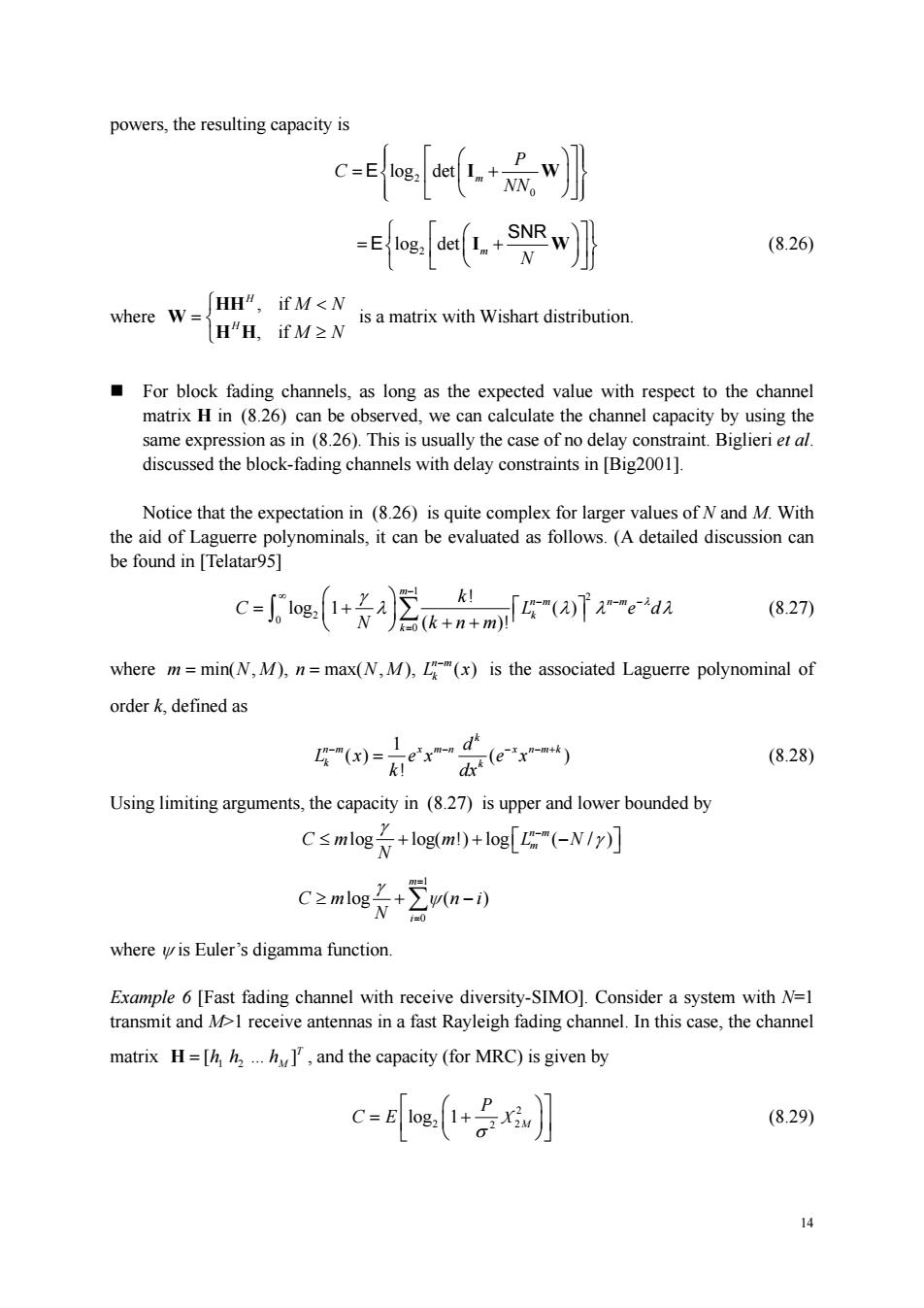正在加载图片...

powers,the resulting capacity is c-ee+品w} o.do(w (8.26) H"H,ifM≥N For block fading channels,as long as the expected value with respect to the channel matrix H in (826)can be erved,we can alculate the channel capacity by same expression as in (8.26).This is usually the case of no delay constraint.Biglierieta discussed the block-fading channels with delay constraints in [Big2001]. Notice that the expectation in (8.26)is quite complex for larger values of N and M.With the aid of I olynominals,it can be evaluated as follows.(A detailed discussion can be found in [Telatar95] C-og.m (8.27) where m=min(N,M).n=max(N,M).(x)is the associated Laguerre polynominal of orderk,defined as (e 国=ex (8.28) Using limiting arguments,the capacity in(827)is upper and lower bounded by Cs mlo+lo(m)+log["N) C≥mlog六+∑ya-0 where is Euler's digamma function. Example 6 [Fast fading channel with receive diversity-SIMO].Consider a system with N=l transmit and M>I receive antennas in a fast Rayleigh fading channel.In this case,the channel matrix H=[,and the capacity (for MRC)is given by c=[e+号G刃 (8.29) 1414 powers, the resulting capacity is 2 0 log det m P C NN E I W 2 log det m N I W SNR E (8.26) where , if , if H H M N M N HH W H H is a matrix with Wishart distribution. For block fading channels, as long as the expected value with respect to the channel matrix H in (8.26) can be observed, we can calculate the channel capacity by using the same expression as in (8.26). This is usually the case of no delay constraint. Biglieri et al. discussed the block-fading channels with delay constraints in [Big2001]. Notice that the expectation in (8.26) is quite complex for larger values of N and M. With the aid of Laguerre polynominals, it can be evaluated as follows. (A detailed discussion can be found in [Telatar95] 1 2 2 0 0 ! log 1 ( ) ( )! m nm nm k k k C L ed N knm (8.27) where min( , ), max( , ), ( ) n m m NM n NM L x k is the associated Laguerre polynominal of order k, defined as 1 () ( ) ! k nm x mn x nmk k k d L x ex e x k dx (8.28) Using limiting arguments, the capacity in (8.27) is upper and lower bounded by log log( !) log ( / ) n m Cm m L N m N 1 0 log ( ) m i C m ni N where is Euler’s digamma function. Example 6 [Fast fading channel with receive diversity-SIMO]. Consider a system with N=1 transmit and M>1 receive antennas in a fast Rayleigh fading channel. In this case, the channel matrix 1 2 [ . ]T M H hh h , and the capacity (for MRC) is given by 2 2 2 2 log 1 M P C E X (8.29)